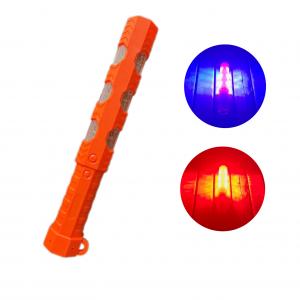Which Warning Light Color Is Most Visible? Real-World Test: Red vs Orange vs Blue
Which Warning Light Color Is Most Visible? Real Visibility Test: Red vs Orange vs Blue
Warning lights are critical tools in ensuring safety across roads, construction sites, emergency situations, and industrial environments. But have you ever wondered:
Which warning light color offers the best visibility?
In this article, we conducted a real-world visibility test comparing red, orange (amber), and blue LED warning lights across various distances and lighting conditions. The results may surprise you — and could even impact your future equipment choices.
Why Color Visibility Matters in Warning Lights
The effectiveness of a warning light depends on its ability to capture attention quickly and clearly, especially in high-risk or low-visibility situations.
Visibility depends on:
Color wavelength (human eye sensitivity)
Ambient lighting (day, night, fog)
LED brightness & angle
Background environment (urban, highway, rural)
Let’s see how each color performs in actual use.
The Visibility Test Setup
We tested three identical warning light models, each with high-quality LEDs in red, amber (orange), and blue, with the following parameters:
|
Parameter |
Value |
|
LED Type |
2835 SMD LEDs |
|
Luminous Flux |
~120 lumens per light |
|
Battery |
3.7V rechargeable lithium |
|
Environment |
Open outdoor field, low ambient light |
|
Viewing Angles |
Direct line of sight, low and high positions |
Test Conditions:
Daylight and Nighttime
Observed from: 50m, 100m, 150m, 200m
Weather: Clear sky, dry ground
Test Results: Color vs Visible Distance
|
Distance |
Red Light Visibility |
Amber (Orange) Visibility |
Blue Light Visibility |
|
50m |
✅ Excellent |
✅ Excellent |
✅ Excellent |
|
100m |
✅ Very Clear |
✅ Very Clear |
⚠️ Slightly Dimmer |
|
150m |
⚠️ Slightly Faded |
✅ Still Clear |
❌ Barely Visible |
|
200m |
❌ Difficult to Spot |
⚠️ Visible but dim |
❌ Not Visible |
Key Findings & Analysis
Red Warning Lights
Pros: Strong psychological urgency; highly visible in close-to-medium range
Cons: May blend into tail lights or traffic signals in urban settings
Best for: Emergency stops, road safety near traffic
Amber (Orange) Warning Lights
Pros: Most consistently visible across all distances tested
Cons: Less “urgent” than red or blue in appearance
Best for: Construction, utility work, general warning zones
Blue Warning Lights
Pros: Highly attention-grabbing at short range or in darkness
Cons: Fades quickly beyond 100m; often restricted to official use in some regions
Best for: Police, emergency, or confined spaces with low visibility
Takeaway: Orange Wins in Long-Range Visibility
Surprisingly, amber (orange) warning lights showed the most consistent visibility at medium to long distances — especially at 150–200 meters. Red lights held up well at shorter ranges, while blue lights were best reserved for dark or indoor environments.
If your application depends on being seen from afar — such as highways or remote work zones — amber is your safest bet.
Tips for Choosing the Right Warning Light Color
|
Scenario |
Recommended Color |
|
Urban roadside emergency |
�� Red or �� Amber |
|
Construction zones |
�� Amber |
|
Police/Medical use |
�� Blue (where legal) |
|
Long-range highway safety |
�� Amber |
|
General-purpose utility |
�� Amber + magnetic base |
Product Suggestion
Looking for a reliable warning light with multiple color options?
Try our Multi-Mode Rechargeable LED Warning Light featuring:
Red/Amber/Blue switchable modes
IP65 waterproof rating
Strong magnet base + hook
6 emergency flash patterns
USB Type-C charging
[Shop Now →]
Have You Tried Different Light Colors?
Let us know in the comments — which color worked best in your real-world experience?
Sharing your feedback helps improve safety for everyone.





